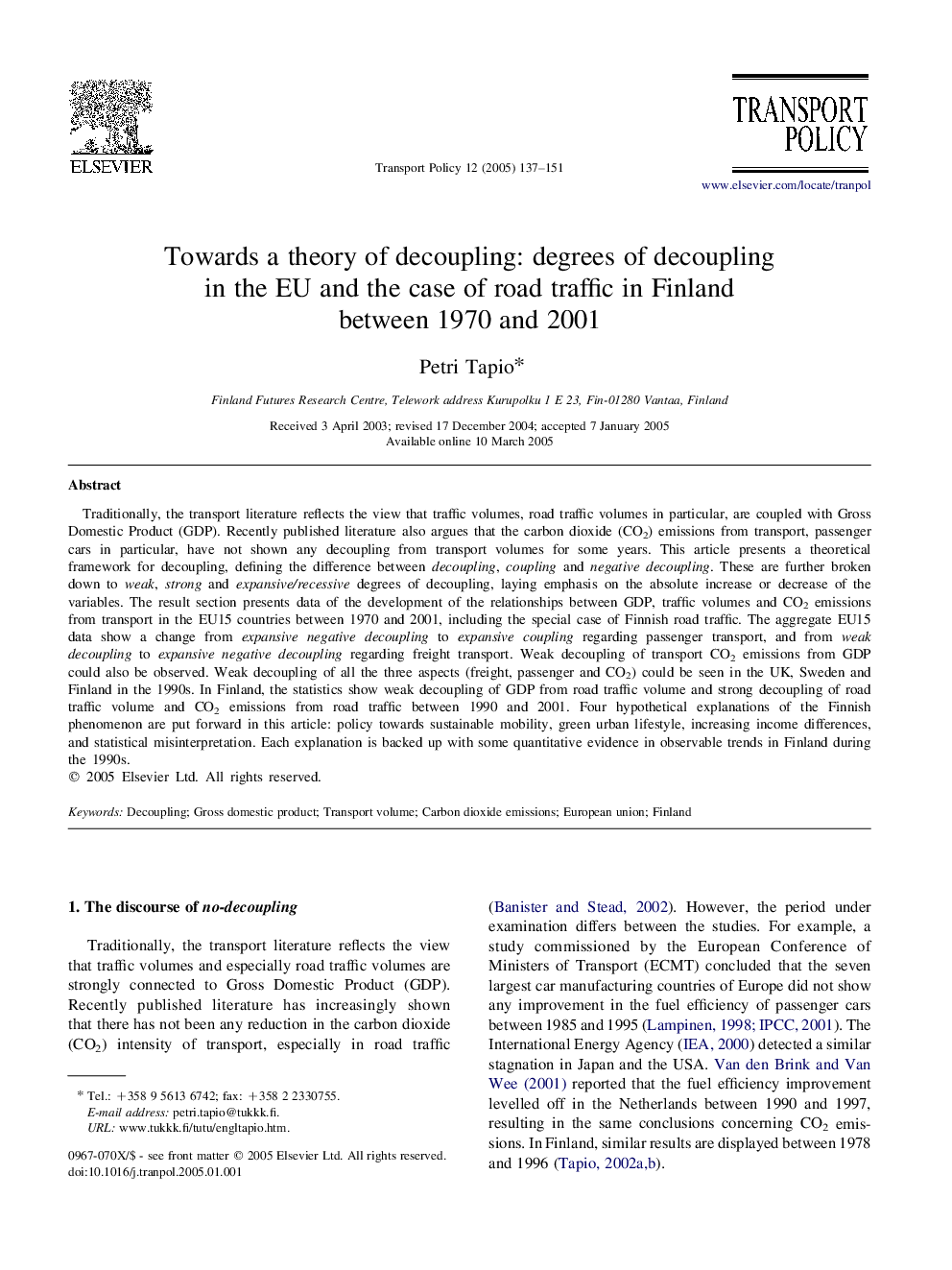| کد مقاله | کد نشریه | سال انتشار | مقاله انگلیسی | نسخه تمام متن |
|---|---|---|---|---|
| 10508601 | 948593 | 2005 | 15 صفحه PDF | دانلود رایگان |
عنوان انگلیسی مقاله ISI
Towards a theory of decoupling: degrees of decoupling in the EU and the case of road traffic in Finland between 1970 and 2001
دانلود مقاله + سفارش ترجمه
دانلود مقاله ISI انگلیسی
رایگان برای ایرانیان
کلمات کلیدی
موضوعات مرتبط
علوم انسانی و اجتماعی
علوم اجتماعی
جغرافیا، برنامه ریزی و توسعه
پیش نمایش صفحه اول مقاله

چکیده انگلیسی
Traditionally, the transport literature reflects the view that traffic volumes, road traffic volumes in particular, are coupled with Gross Domestic Product (GDP). Recently published literature also argues that the carbon dioxide (CO2) emissions from transport, passenger cars in particular, have not shown any decoupling from transport volumes for some years. This article presents a theoretical framework for decoupling, defining the difference between decoupling, coupling and negative decoupling. These are further broken down to weak, strong and expansive/recessive degrees of decoupling, laying emphasis on the absolute increase or decrease of the variables. The result section presents data of the development of the relationships between GDP, traffic volumes and CO2 emissions from transport in the EU15 countries between 1970 and 2001, including the special case of Finnish road traffic. The aggregate EU15 data show a change from expansive negative decoupling to expansive coupling regarding passenger transport, and from weak decoupling to expansive negative decoupling regarding freight transport. Weak decoupling of transport CO2 emissions from GDP could also be observed. Weak decoupling of all the three aspects (freight, passenger and CO2) could be seen in the UK, Sweden and Finland in the 1990s. In Finland, the statistics show weak decoupling of GDP from road traffic volume and strong decoupling of road traffic volume and CO2 emissions from road traffic between 1990 and 2001. Four hypothetical explanations of the Finnish phenomenon are put forward in this article: policy towards sustainable mobility, green urban lifestyle, increasing income differences, and statistical misinterpretation. Each explanation is backed up with some quantitative evidence in observable trends in Finland during the 1990s.
ناشر
Database: Elsevier - ScienceDirect (ساینس دایرکت)
Journal: Transport Policy - Volume 12, Issue 2, March 2005, Pages 137-151
Journal: Transport Policy - Volume 12, Issue 2, March 2005, Pages 137-151
نویسندگان
Petri Tapio,